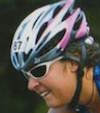By nature, endurance athletes like to push their limits in an effort to improve. For some, that drive goes beyond simply doing their best and it becomes an addiction. This addiction can lead to many problems, both physical and mental, and can have very severe consequences. Often, it is a rigid and thin social aesthetic that creates this growing problem.
Crossing From Healthy to Addiction
So where does a healthy hobby end and an addiction begin? Exercise-dependent athletes want to train hard every single day, which is simply not healthy and not physiologically sound. If you are not overloaded and then rested, you will not improve. When pushed too much without proper rest athletes will likely get injured, sick, or burned out.
This short quiz can help you see if you, or a friend has crossed the line.
- Do you feel increased levels of anxiety when there is no race on the calendar?
- Do you experience depression symptoms that training covers up?
- Do you engage in “secret” training, or do more than the coach put on the training plan?
- Do you “up the ante” each time, and try for longer and longer distances?
- Are you controlled by the calories in/calories out continuum?
If you can identify with any one of these above statements then the concept of overtraining and its negative consequences affect you.
Overtraining
By definition, overtraining is “training too hard or too long.” When athletes not performing at your optimal level, their coach and physiologists look at every component of their training, which may include all of the following:
- Psychological: How is their mood state, are they energized, depressed, tired or anxious?
- Biochemical: What is their red blood cell count, are they anemic? What is the white blood cell count, are they fighting an infection?
- Hormonal: What is their cortisol level? Are they stressed?
Research suggests that 20 to 60 percent of athletes experience the negative effects of overtraining at least once during their career1. As such, it is important that athletes and coaches are familiar with the signs and symptoms as well as some theories contributing to overtraining to avoid these occurrences in their athletes.
Detecting exercise dependence patterns is the first step to becoming a healthy and successful athlete. For coaches, noting when an athlete refuses to rest, becomes agitated during periods of taper, or prioritizes training over family, work, and social obligations are some warning signs that exercise dependence may be present. A coach is often the first line of defense here. They can monitor an athlete’s progress and attitude with how they are approaching their training.
It can be hard to self-diagnose overtraining, because, by nature, athletes want to push themselves. If you are not working with a coach, write down what you are doing for training and have a trusted friend look over your training logs to see if you are building in sufficient rest periods. The hardest part is to take the first step, taking a day off, and to recognize that the goal isn’t always to do more and more and more. Instead, your goal should be to allow ample rest by structuring training progressively with adequate recovery to ensure that the body can respond properly to training sessions and come back stronger and fitter from the effort.
Signs and Symptoms of Overtraining
Catching overtraining before it has gone too far is crucial not only for athletic improvement but also for basic health. Below is a list of six things to look for to see early signs of overtraining.
- Decrease in performance
- Mood disturbance
- Shift in appetite resulting in a potential change in their body composition
- Alternation in their sleep habits
- Alteration in their overall effect
- Slower race times
Rest is what you need to pull an athlete out of an under recovery spiral. A lack of rest can severely affect not only athletic results, but also overall health. Yet rest is very challenging, if not virtually impossible, for the athlete who is dependent on exercise. For the addicted athlete, rest deprives them of their addictive substance (exercise).
Preventing Overtraining
So, how can athletes prevent overtraining? With the advent of heart rate monitors, power meters, and data analysis software (like TrainingPeaks) athletes and coaches are now able to quantify and track training stress and monitor recovery.
The most effective way to prevent overtraining is to hire a coach who utilizes the above metrics. It is invaluable to have an objective opinion. Hiring an informed professional to design a physiologically sound training plan builds in a prevention plan (i.e. ample rest) to avoid overtraining. Additionally, coaches and athletes can:
1. Monitor progress and recovery through daily logs.
2. Increase Education so that you:
- Appreciate the importance of recovery in your training program and thus are more likely to follow the program as written.
- Read about exercise physiology and how the body responds to overload.
- Understand that the body gets stronger and adapts to stress only in the recovery and rest phases.
- Examine how too much overload leads to injury and illness and thus negatively affects performance.
3. Increase awareness of all of the contributing factors when it comes to your training including:
- The importance of sleep
- Proper nutrition
- Minimizing stress
4. Recognize early signs of overtraining or inadequate recovery.
The more educated athletes and coaches are about the process of training, the better equipped they are to avoid the potentials of overtraining. They understand the ramifications of their actions, namely negative performance, and can become their own best advocate when it comes to training healthy and racing strong.
Athletes are the first line of defense when it comes to avoiding overtraining. Coaches and mental health practitioners can be scrupulous about the data collection and monitoring of overload and recovery, but arguably, no one knows their body better than the athlete him/herself. Education can provide the tools to know what to look for in early detection of problematic patterns and thus enable athletes to avoid the slippery slope of overtraining.
In fact, learning to rest, recover, and have a healthy approach to training and exercise will lead to faster race day results. This is the premise of my research and my approach to coaching.


